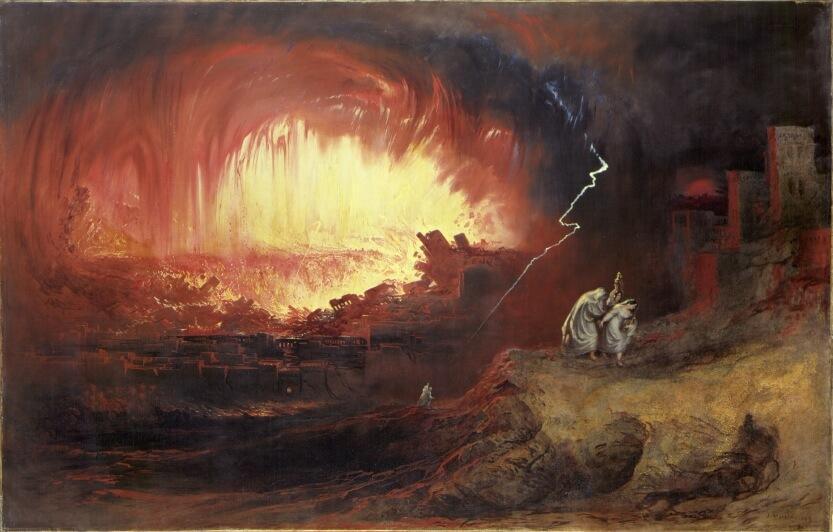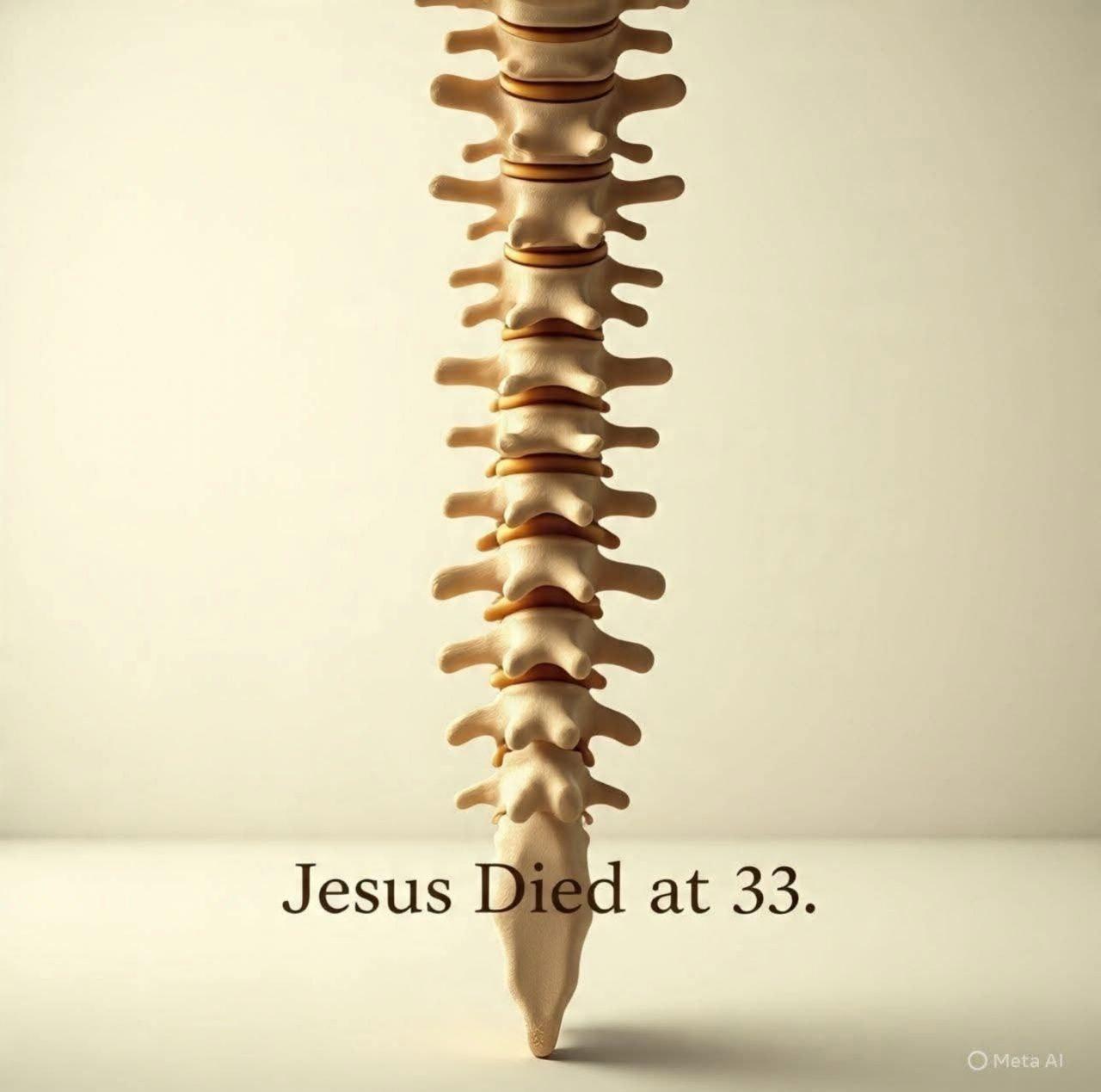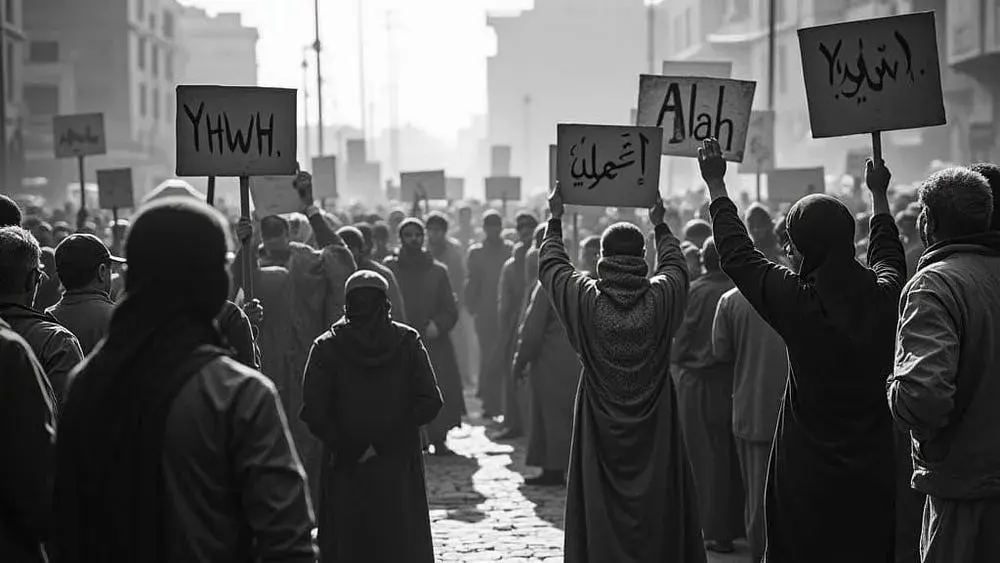An Examination of Conditional Immortality (Part Two)

Welcome to Part Two of my study and examination of Conditional Immortality (aka Annihilationism). If you missed part one, you can read that one here.
As with part one, this will be a long post as there is still much ground to cover before we can really grasp the bigger picture about what Scripture teaches. So with that said, I’ll pick right up where we left off. In part one, I covered a lot of New Testament texts, a few Old Testament passages, plus a look at what some of the earliest church leaders also wrote on the topic to the early church. In this one, we will be looking at a few more Old Testament examples and how they relate to the imagery used in Revelation, amongst other things.
Unquenchable Fire and Undying Worms
What of unquenchable fire and undying worms? Do these phrases really mean that the fuel of the fire and the worms must last forever and ever? We have a few references to shed some light on the meaning of these phrases which we can examine below:
Ezekiel 20:46–48
Mortal, set your face toward the south, preach against the south, and prophesy against the forest land in the Negeb; say to the forest of the Negeb, Hear the word of the Lord: Thus says the Lord God, I will kindle a fire in you, and it shall devour every green tree in you and every dry tree; the blazing flame shall not be quenched, and all faces from south to north shall be scorched by it. All flesh shall see that I the Lord have kindled it; it shall not be quenched.
So, in our first example, Ezekiel was obviously not prophesying that the forests of Negeb would burn forever and never go out. Instead, fire that “shall not be quenched” is used to mean fire that cannot be interrupted or stopped in its destructive purpose. No one is able to stop a fire like this until it has run its course, or it is stopped by something greater, which is what the word “quench” actually means. It is an action performed by something external which stops the flames — what it doesn’t mean is a fire burning out naturally once it consumes its fuel. The fire will continue regardless.
Jeremiah 17:27
But if you do not listen to me, to keep the sabbath day holy, and to carry in no burden through the gates of Jerusalem on the sabbath day, then I will kindle a fire in its gates; it shall devour the palaces of Jerusalem and shall not be quenched.
Here is another reference to an unquenchable fire consuming something and not being stopped even after the object of destruction has been “devour[ed]”. The image is one of a fire which rages on and on, even after everything in it is burnt up and destroyed.
Now let’s move onto the “undying worms” and see how that phrase is used. In the New Testament we see this phrase used in Mark 9:47–48, which originally comes from Isaiah, and also a similar theme in Jeremiah.
Isaiah 66:24
And they shall go out and look at the dead bodies of the people who have rebelled against me; for their worm shall not die, their fire shall not be quenched, and they shall be an abhorrence to all flesh.
A little earlier in Isaiah 66 (v.16) we see that God executes judgement with fire and “by his sword, on all flesh”, and that the dead will be many, ending the chapter with the verse quoted above. Jeremiah picks up on a similar theme of God’s judgement, people being killed to such an extent there won’t be room to bury them. This is also where we find a reference to Gehenna, or the valley of the son of Hinnom, as its name means (also called Topheth), in chapters 7 and 19. The concept of Gehenna as a place of punishment is then picked up by Jesus in Matthew 10:28, which he uses in a more eschatological sense.
Jeremiah 7:32–33
Therefore, the days are surely coming, says the Lord, when it will no more be called Topheth, or the valley of the son of Hinnom, but the valley of Slaughter: for they will bury in Topheth until there is no more room. The corpses of this people will be food for the birds of the air, and for the animals of the earth; and no one will frighten them away.
In Isaiah, the worms and the unquenchable fire are consuming corpses — not living people. It’s not said that these things will burn forever, but even if they did, they are there to serve as a sign to others. Nor is it inferred that the bodies are alive, that is assumed into the text by proponents of Eternal Conscious Torment (ECT). Then in Jeremiah we have a reference to unstoppable scavengers eating corpses that “no one will frighten them away”. We don’t (or shouldn’t) assume that this means wild beasts will be eating the bodies of the dead forever and ever, just that they simply shall not be stopped until the process of destruction is completed, similar to the fire and worms.
Malachi makes this point and the fate of the wicked even more explicit. Keeping with the fire imagery, he speaks of “all evildoers” being burned up to “stubble” and “ashes” under the feet of the righteous; that “neither root nor branch” will be left of them. If we are going to go by a “plain reading of Scripture”, as some people like to say, then it doesn’t get much more plain than this here:
Malachi 4:1–3
See, the day is coming, burning like an oven, when all the arrogant and all evildoers will be stubble; the day that comes shall burn them up, says the Lord of hosts, so that it will leave them neither root nor branch. But for you who revere my name the sun of righteousness shall rise, with healing in its wings. You shall go out leaping like calves from the stall. And you shall tread down the wicked, for they will be ashes under the soles of your feet, on the day when I act, says the Lord of hosts.
The Book of Revelation
Let’s now move to the New Testament and take a look at some of the more difficult passages in Revelation which are often used as “proof texts” against Annihilationism and in favour of ECT. Here’s two of the more well-known passages of Scripture:
Revelation 14:9–11
Then another angel, a third, followed them, crying with a loud voice, “Those who worship the beast and its image, and receive a mark on their foreheads or on their hands, they will also drink the wine of God’s wrath, poured unmixed into the cup of his anger, and they will be tormented with fire and sulphur in the presence of the holy angels and in the presence of the Lamb. And the smoke of their torment goes up forever and ever. There is no rest day or night for those who worship the beast and its image and for anyone who receives the mark of its name.”
Revelation 20:10–15
And the devil who had deceived them was thrown into the lake of fire and sulphur, where the beast and the false prophet were, and they will be tormented day and night forever and ever.
Then I saw a great white throne and the one who sat on it; the earth and the heaven fled from his presence, and no place was found for them. And I saw the dead, great and small, standing before the throne, and books were opened. Also another book was opened, the book of life. And the dead were judged according to their works, as recorded in the books. And the sea gave up the dead that were in it, Death and Hades gave up the dead that were in them, and all were judged according to what they had done. Then Death and Hades were thrown into the lake of fire. This is the second death, the lake of fire; and anyone whose name was not found written in the book of life was thrown into the lake of fire.
There’s a lot packed into these two passages, so let’s break them down and look at the imagery and phrases used one by one.
First, “their smoke will go up forever”. This reference points back to the destruction of the land of Edom in Isaiah 34 which uses the same phrase, and can act as an archetype of God’s everlasting judgement on something. Let’s look at the passage:
Isaiah 34:9–10
And the streams of Edom shall be turned into pitch, and her soil into sulphur; her land shall become burning pitch. Night and day it shall not be quenched; its smoke shall go up forever. From generation to generation it shall lie waste; no one shall pass through it forever and ever.
We are told that the smoke goes up forever and that it will not be quenched day or night — but this is speaking about the temporal destruction of a land, and we are told a few verses later that the wild beasts and other animals will come to live in the land. Clearly this is not picturing a fire that burns its fuel forever and ever, even though the text sounds like this is what it implies at first glance. We can visit the land where Edom used to be today, and we won’t find plumes of smoke or fire there, just desolate desert. This is the backdrop of the passage in Revelation 14: they are utterly destroyed and they have no rest anymore because they are dead and destroyed completely, or an alternative view is that the restlessness is during the outpouring of God’s wrath as it will be unrelenting (“unquenchable”) until it is complete, and then the smoke rises signifying the result of the judgement for all to see.
Christopher Date explains the latter view well in his book, Rethinking Hell: Readings in Evangelical Conditionalism:
The background to Rev 14:11 is to be found in this picture of Sodom’s destruction and to the oracle of Edom’s destruction in Isa 34:10ff. “Isaiah says ‘its smoke will rise forever,’ telling us that Edom’s destruction is not only certain (not quenched) and complete (smoke rising) but also irreversible. The desolation will be unending.” The torment experienced in the presence of the angels and of the Lamb refers to the moment of judgment, not to the eternal state. What continues after their tormenting judgment and destruction is the sign of their extinction — the rising smoke; this is the same picture that is found in Genesis 19 and Isaiah 34.
[…]
It is the literary structure of Rev 14:9–11 that provides the explanation of the meaning of the judgment and its elements. The crucial key to understanding phrases or sentences is found by matching them with their corresponding items in the whole structure. The introverted parallelism of Rev 14:9–11 shows us that the final element in the depiction of judgment is the smoke rising after the judgment has been completed, as is the case in Isa 34:9, 10. The climactic element is in the central position in this structure — the tormenting judgment that destroys utterly. The other two elements in the inversion refer to the intense experience of the judgment as it happens; it’s a full strength outpouring of God’s wrath that leaves no rest or break while it is unfolding. We can see that the phrase “no rest, day or night” is logically prior to the rising smoke. The meaning can be seen by observing the corresponding member of the inverted parallelism. “No rest day or night” is another way of saying that God’s wrath is poured out in full strength when the judgment is operating; it is quenchless, unremitting and overwhelming. In modern warfare terms, it is the equivalent of intense, day and night, bombing; there is no break until it obliterates the enemy. The meaning of Rev 14:11 is in harmony with the passage in Isaiah 34 that lies behind it. (pp. 141–142; 145)
To address the second passage (Rev 20:10–15), we need to take a look at how the symbol of torment is used in Revelation, and exactly what gets cast into the Lake of Fire.
The book of Revelation is an apocalyptic book, which is a specific genre of writing, full of symbols and typology, and we are often relying on the angel who is with John to speak up and clarify some points of the vision. Similar to Joseph’s interpretation of Pharaoh’s dream where he helps to unravel the symbolism (Gen 41:26), or in Daniel 7 where the angel explains the meaning of the vision, the angel with John does the same thing.
Revelation 17:15
And he said to me, “The waters that you saw, where the whore is seated, are peoples and multitudes and nations and languages.”
Obviously from this, we don’t say that the peoples and nations are actually water, just like the whore isn’t an actual woman, but a city. It’s representative of something else; of an earthly reality veiled with symbolic, poetic imagery. We must remember that just because Revelation is highly allegorical and symbolic in its nature, that doesn’t mean it isn’t speaking to real and actual events. It’s just not describing them literally.
Let’s stay with the “whore” for a moment, as what happens to her will help us with understanding some of the events in Revelation chapters 14 and 20.
The kings of earth “weep and wail” over her torment, and watch her destruction with fire from a distance:
Revelation 18:9–10
And the kings of the earth, who committed fornication and lived in luxury with her, will weep and wail over her when they see the smoke of her burning; they will stand far off, in fear of her torment, and say, “Alas, alas, the great city, Babylon, the mighty city! For in one hour your judgment has come.”
More judgement is written against this “whore” (or Babylon) and what will become of her:
Revelation 18:21
Then a mighty angel took up a stone like a great millstone and threw it into the sea, saying, “With such violence Babylon the great city will be thrown down, and will be found no more;
Then we see what happens to finalise the judgement in chapter 19:
Revelation 19:1–3
“Hallelujah! Salvation and glory and power to our God, for his judgments are true and just; he has judged the great whore who corrupted the earth with her fornication, and he has avenged on her the blood of his servants.”
Once more they said, “Hallelujah! The smoke goes up from her forever and ever.”
Once more, we see the “smoke goes up from her forever and ever” imagery, and the harlot is depicted as burning. But this does not represent the eternal torment of a literal, human woman. Instead, the torment of the harlot symbolizes the destruction of what she represents: the “great city” and the depraved culture and society within. If we go to Jeremiah, we will also see where the reference to the millstone comes from in Revelation 18:
Jeremiah 51:63–64
When you finish reading this scroll, tie a stone to it, and throw it into the middle of the Euphrates, and say, ‘Thus shall Babylon sink, to rise no more, because of the disasters that I am bringing on her.’”
The “whore”/Babylon is destroyed and her torment, fire and smoke represents that; it is interpreted for us within the text itself.
Now let’s go back to Revelation 20 and the Lake of Fire.
(v.10) And the devil who had deceived them was thrown into the lake of fire and sulphur, where the beast and the false prophet were, and they will be tormented day and night forever and ever.
(v.14,15) Then Death and Hades were thrown into the lake of fire. This is the second death, the lake of fire; and anyone whose name was not found written in the book of life was thrown into the lake of fire.
Let’s see what is cast into the lake of fire: the devil, the beast, the false prophet (plus all those who follow them) and, finally, death and Hades. Even if you are a complete futurist and see the beast and the false prophet as representing real, literal people, death and Hades are certainly not people and aren’t tormented forever in the lake of fire; they are destroyed (see 2 Timothy 1:10 and 1 Corinthians 15:26 to confirm this).
Now, personally, I see the beast as representing Rome primarily and historically (as per the visions in Daniel 7 where we get this beast imagery from), but also it could be repetitive of any nation who goes against God; and the false prophet representing false religion, either historically about Judaism — and some say the High Priest, specifically, at the end of the first century — that rejected the Church, or the wider pagan beliefs of the Roman Empire. But again, if we take Revelation as a “template” of what can be a cyclical set of events throughout history, this could refer to any and all other religions which draw people away from the truth of Christ.
With this in mind, not everything going into the Lake of Fire lasts forever, even in the Eternal Conscious Torment (ECT) view, as the objects aren’t necessarily always physical people (like death). What does John call the Lake of Fire, so that we understand what he is witnessing: “the second death”. In that same verse, John juxtaposed the “book of life” with “the second death”, which gives us that stark contrast and helps us to see what exactly the Lake of Fire is:
Revelation 20:14–15
… This is the second death, the lake of fire; and anyone whose name was not found written in the book of life was thrown into the lake of fire. (emphasis mine)
If you don’t have life, then the only other option is death. And considering at this point in the narrative, we are looking at a scene in the spiritual realm, anyone who is present and human must have already physically died, hence the need for a second death (see also Revelation 21:8).
To Conclude
We saw in my first post that Gehenna, or the unquenchable fire, is said to be the reduction of the wicked to ashes and their total destruction — both body and soul. If, as I have shown, it is possible to interpret Revelation 20 in a way that still works under the conditionalism framework of interpretation, then, apart from keeping Scripture internally consistent, it is also a major blow to ECT as the answer to nearly every Bible verse quoted about the destruction of the wicked is met with some reference to Revelation 20. This is a very feeble and weak branch to stand upon. Typically, the rules of interpreting the more obscure and unique parts of Scripture, is to use the clearer parts to define the less clear, not the other way around! Or shall we take a passage in apocalyptic literature and use it to reinterpret everything else the Bible says about the fate of the wicked in much clearer, less symbolic language?
Agree, disagree? Let me know your thoughts in the comments, and please share this if you found it edifying.
To Be Continued…
That’s all for this one, I hope it has been informative and maybe eye-opening for you. I’m trying not to make these posts too long, but when dealing with this topic, there needs to be an untangling of many presuppositions to properly examine the various images used throughout the Bible before it all comes together.
I originally said that this would be a two part series, but there will be a final Part 3 now, where I’ll look briefly at the Tree of Life motif in reference to eternal life and conditionalism, and summarise these last two posts to bring it all together as a (hopefully) cohesive whole.
Further Reading/Sources
- https://oncedelivered.net/tag/eclectic-view/
- https://www.britannica.com/art/apocalyptic-literature
- https://reknew.org/2008/01/are-you-an-annihilationist-and-if-so-why/
- https://reknew.org/2008/01/the-case-for-annihilationism/
- https://reknew.org/2014/12/what-the-new-testament-says-about-annihilation/
- Rethinking Hell: Readings in Evangelical Conditionalism — https://amzn.to/3yZAVe9
- https://www.thehellproject.online/post/10-traditionalist-arguments-that-need-to-die
Leave a comment Like Back to Top Seen 2.2K times Liked 2 times
Enjoying this content?
Support my work by becoming a patron on Patreon!
By joining, you help fund the time, research, and effort that goes into creating this content — and you’ll also get access to exclusive perks and updates.
Even a small amount per month makes a real difference. Thank you for your support!
Subscribe to Updates
If you enjoyed this, why not subscribe to free email updates and join over 864 subscribers today!
My new book is out now! Order today wherever you get books
Recent Posts
Luke J. Wilson | 19th August 2025 | Fact-Checking
A poetic post has been circulating widely on Facebook, suggesting that our anatomy mirrors various aspects of Scripture. On the surface it sounds inspiring, but when we take time to weigh its claims, two main problems emerge. The viral post circulating on Facebook [Source] First, some of its imagery unintentionally undermines the pre-existence of Christ, as if Jesus only “held the earth together” for the 33 years of His earthly life. Second, it risks reducing the resurrection to something like biological regeneration, as if Jesus simply restarted after three days, instead of being raised in the miraculous power of God. Alongside these theological dangers, many of the scientific claims are overstated or symbolic rather than factual. Let’s go through them one by one. 1. “Jesus died at 33. The human spine has 33 vertebrae. The same structure that holds us up is the same number of years He held this Earth.” The human spine does generally have 33 vertebrae, but that number includes fused bones (the sacrum and coccyx), and not everyone has the same count. Some people have 32 or 34. More importantly, the Bible never says Jesus was exactly 33 when He died — Luke tells us He began His ministry at “about thirty” (Luke 3:23), and we know His public ministry lasted a few years, but His precise age at death is a tradition, not a biblical statement. See my other recent article examining the age of Jesus here. Theologically, the phrase “the same number of years He held this Earth” is problematic. Jesus did not hold the world together only for 33 years. The eternal Word was with God in the beginning (John 1:1–3), and “in Him all things hold together” (Colossians 1:17). Hebrews says He “sustains all things by His powerful word” (Hebrews 1:3). He has always upheld creation, before His incarnation, during His earthly ministry, and after His resurrection. To imply otherwise is to risk undermining the pre-existence of Christ. 2. “We have 12 ribs on each side. 12 disciples. 12 tribes of Israel. God built His design into our bones.” Most people do have 12 pairs of ribs, though some are born with an extra rib, or fewer. The number 12 is certainly biblical: the 12 tribes of Israel (Genesis 49), the 12 apostles (Matthew 10:1–4), and the 12 gates and foundations of the New Jerusalem (Revelation 21). But there’s no biblical connection between rib count and these symbolic twelves. This is a case of poetic association, not design woven into our bones. The only real mention of ribs in Scripture is when Eve is created from one of Adam’s ribs in Genesis 2:21–22, which has often led to the teaching in some churches that men have one less rib than women (contradicting this new claim)! 3. “The vagus nerve runs from your brain to your heart and gut. It calms storms inside the body. It looks just like a cross.” The vagus nerve is real and remarkable. It regulates heart rate, digestion, and helps calm stress, and doctors are even using vagus nerve stimulation as therapy for epilepsy, depression, and inflammation showing it really does “calm storms” in the body. But it does not look like a cross anatomically. The language about “calming storms” may echo the way Jesus calmed the storm on the Sea of Galilee (Mark 4:39), but here again the poetic flourish stretches science (and Scripture) beyond what’s accurate. 4. “Jesus rose on the third day. Science tells us that when you fast for 3 days, your body starts regenerating. Old cells die. New ones are born. Healing begins. Your body literally resurrects itself.” There’s a serious theological problem here. To equate Jesus’ resurrection with a biological “regeneration” after fasting is to misrepresent what actually happened. Fasting can indeed trigger cell renewal and immune repair, but it cannot bring the dead back to life. It’s still a natural process that happens...
Luke J. Wilson | 08th July 2025 | Islam
“We all worship the same God”. Table of Contents 1) Where YHWH and Allah Appear Similar 2) Where Allah’s Character Contradicts YHWH’s Goodness 3) Where Their Revelations Directly Contradict Each Other 4) YHWH’s Love for the Nations vs. Allah’s Commands to Subjugate 5) Can God Be Seen? What the Bible and Qur’an Say 6) Salvation by Grace vs. Salvation by Works Conclusion: Same God? Or Different Revelations? You’ve heard it from politicians, celebrities, and even some pastors. It’s become something of a modern mantra, trying to shoehorn acceptance of other beliefs and blend all religions into one, especially the Abrahamic ones. But what if the Bible and Qur’an tell different stories? Let’s see what their own words reveal so you can judge for yourself. This Tweet recently caused a stir on social media 1) Where YHWH and Allah Appear Similar Many point out that Jews, Christians, and Muslims share a belief in one eternal Creator God. That’s true — up to a point. Both the Bible and Qur’an describe God as powerful, all-knowing, merciful, and more. Here’s a list comparing some of the common shared attributes between YHWH and Allah, with direct citations from both Scriptures: 26 Shared Attributes of YHWH and Allah According to the Bible (NRSV) and the Qur’an Eternal YHWH: “From everlasting to everlasting you are God.” — Psalm 90:2 Allah: “He is the First and the Last…” — Surah 57:3 Creator YHWH: “In the beginning God created the heavens and the earth.” — Genesis 1:1 Allah: “The Originator of the heavens and the earth…” — Surah 2:117 Omnipotent (All-Powerful) YHWH: “Nothing is too hard for you.” — Jeremiah 32:17 Allah: “Allah is over all things competent.” — Surah 2:20 Omniscient (All-Knowing) YHWH: “Even before a word is on my tongue, O LORD, you know it.” — Psalm 139:4 Allah: “He knows what is on the land and in the sea…” — Surah 6:59 Omnipresent (Present Everywhere) YHWH: “Where can I go from your Spirit?” — Psalm 139:7–10 Allah: “He is with you wherever you are.” — Surah 57:4 Holy YHWH: “Holy, holy, holy is the LORD of hosts.” — Isaiah 6:3 Allah: “The Holy One (Al-Quddus).” — Surah 59:23 Just YHWH: “A God of faithfulness and without injustice.” — Deuteronomy 32:4 Allah: “Is not Allah the most just of judges?” — Surah 95:8 Merciful YHWH: “The LORD, merciful and gracious…” — Exodus 34:6 Allah: “The Most Gracious, the Most Merciful.” — Surah 1:1 Compassionate YHWH: “As a father has compassion on his children…” — Psalm 103:13 Allah: “He is the Forgiving, the Affectionate.” — Surah 85:14 Faithful YHWH: “Great is your faithfulness.” — Lamentations 3:22–23 Allah: “Indeed, the promise of Allah is truth.” — Surah 30:60 Unchanging YHWH: “For I the LORD do not change.” — Malachi 3:6 Allah: “None can change His words.” — Surah 6:115 Sovereign YHWH: “The LORD has established his throne in the heavens…” — Psalm 103:19 Allah: “Blessed is He in whose hand is dominion…” — Surah 67:1 Loving YHWH: “God is love.” — 1 John 4:8 Allah: “Indeed, my Lord is Merciful and Affectionate (Al-Wadud).” — Surah 11:90 Forgiving YHWH: “I will not remember your sins.” — Isaiah 43:25 Allah: “Allah forgives all sins…” — Surah 39:53 Wrathful toward evil YHWH: “The LORD is a jealous and avenging God…” — Nahum 1:2 Allah: “For them is a severe punishment.” — Surah 3:4 One/Unique YHWH: “The LORD is one.” — Deuteronomy 6:4 Allah: “Say: He is Allah, One.” — Surah 112:1 Jealous of worship YHWH: “I the LORD your God am a jealous God.” �...
Luke J. Wilson | 05th June 2025 | Blogging
As we commemorated the 500th anniversary of the Protestant Reformation this year, the familiar image of Martin Luther striding up to the church door in Wittenberg — hammer in hand and fire in his eyes — has once again taken centre stage. It’s a compelling picture, etched into the imagination of many. But as is often the case with historical legends, closer scrutiny tells a far more nuanced and thought-provoking story. The Myth of the Door: Was the Hammer Ever Raised? Cambridge Reformation scholar Richard Rex is one among several historians who have challenged the romanticised narrative. “Strangely,” he observes, “there’s almost no solid evidence that Luther actually went and nailed them to the church door that day, and ample reasons to doubt that he did.” Indeed, the first image of Luther hammering up his 95 Theses doesn’t appear until 1697 — over 180 years after the fact. Eric Metaxas, in his recent biography of Luther, echoes Rex’s scepticism. The earliest confirmed action we can confidently attribute to Luther on 31 October 1517 is not an act of public defiance, but the posting of two private letters to bishops. The famous hammer-blow may never have sounded at all. Conflicting Accounts Philip Melanchthon, Luther’s successor and first biographer, adds another layer of complexity. He claimed Luther “publicly affixed” the Theses to the door of All Saints’ Church, but Melanchthon wasn’t even in Wittenberg at the time. Moreover, Luther himself never mentioned posting the Theses publicly, even when recalling the events years later. Instead, he consistently spoke of writing to the bishops, hoping the matter could be addressed internally. At the time, it was common practice for a university disputation to be announced by posting theses on church doors using printed placards. But no Wittenberg-printed copies of the 95 Theses survive. And while university statutes did require notices to be posted on all church doors in the city, Melanchthon refers only to the Castle Church. It’s plausible Luther may have posted the Theses later, perhaps in mid-November — but even that remains uncertain. What we do know is that the Theses were quickly circulated among Wittenberg’s academic elite and, from there, spread throughout the Holy Roman Empire at a remarkable pace. The Real Spark: Ink, Not Iron If there was a true catalyst for the Reformation, it wasn’t a hammer but a printing press. Luther’s Latin theses were swiftly reproduced as pamphlets in Basel, Leipzig, and Nuremberg. Hundreds of copies were printed before the year’s end, and a German translation soon followed, though it may never have been formally published. Within two weeks, Luther’s arguments were being discussed across Germany. The machinery of mass communication — still in its relative infancy — played a pivotal role in what became a theological, political, and social upheaval. The Letters of a Conscientious Pastor Far from the bold revolutionary of popular imagination, Luther appears in 1517 as a pastor deeply troubled by the abuse of indulgences, writing with respectful concern to those in authority. In his letter to Archbishop Albrecht of Mainz, he humbly addresses the archbishop as “Most Illustrious Prince,” and refers to himself as “the dregs of humanity.” “I, the dregs of humanity, have so much boldness that I have dared to think of a letter to the height of your Sublimity,” he writes — hardly the voice of a man trying to pick a fight. From Whisper to Roar Luther’s initial appeal through formal channels was, predictably, ignored. He was advised not to make trouble. But as opposition mounted and corruption remained unchecked, the once quiet reformer grew louder. His theological convictions deepened, and his public persona evolved. The lion did eventually roar — but not on October 31. A Catholic Reformer, Not a Protestant Founder It’s vital to remem...
Luke J. Wilson | 20th May 2025 | Islam
You are not alone. Around the world, many Muslims — people who already believe in one God, pray, and seek to live righteously — are drawn to know more about Jesus (ʿĪsā in Arabic). Some have heard He is more than a prophet. Some have sensed His presence in a dream or vision. And some simply long to know God more deeply, personally, and truly. So what does it mean to become a Christian? And how can you take that step? This guide is for you. 1. What Christians Believe About God and Jesus ➤ One God, Eternal and Good Christians believe in one God — the same Creator known to Abraham, Moses, and the prophets. But we also believe God is more personal and relational than many realise. In His love, He has revealed Himself as Father, Son (Jesus), and Holy Spirit — not three gods, but one God in three persons. ➤ Jesus Is More Than a Prophet Muslims honour Jesus as a great prophet, born of the virgin Mary. Christians also affirm this — but go further. The Bible teaches that Jesus is the Word of God (Kalimat Allāh), who became flesh to live among us. He performed miracles, healed the sick, raised the dead — and lived without sin.Jesus came not just to teach but to save — to bring us back to God by bearing our sins and rising again in victory over death. 2. Why Do We Need Saving? ➤ The Problem: Sin All people — no matter their religion — struggle with sin. We lie, get angry, feel jealous, act selfishly, or fail to love God fully. The Bible says: “All have sinned and fall short of the glory of God.” (Romans 3:23) Sin separates us from God. And no matter how many good deeds we do, we can never make ourselves perfect or holy before Him. ➤ The Solution: Jesus Because God loves us, He did not leave us in our sin. He sent Jesus, His eternal Word, to live as one of us. Jesus died willingly, offering His life as a sacrifice for our sins, then rose again on the third day. “But God proves his love for us in that while we still were sinners Christ died for us.” (Romans 5:8) 3. How Do I Become a Christian? Becoming a Christian is not about joining a Western religion. It’s about entering a relationship with God through faith in Jesus Christ. Here is what the Bible says: ✝️ 1. Believe in Jesus Believe that Jesus is the Son of God, that He died for your sins, and that He rose again. “If you confess with your lips that Jesus is Lord and believe in your heart that God raised him from the dead, you will be saved.” (Romans 10:9) 💔 2. Repent of Your Sins Turn away from sin and ask God to forgive you. This is called repentance. It means being truly sorry and choosing a new way. “Repent therefore, and turn to God so that your sins may be wiped out.” (Acts 3:19) 💧 3. Be Baptised Jesus commands His followers to be baptised in water as a sign of their new life. Baptism represents washing away your old life and rising into a new one with Jesus. “Repent and be baptised every one of you in the name of Jesus Christ so that your sins may be forgiven.” (Acts 2:38) 🕊️ 4. Receive the Holy Spirit When you believe in Jesus, God gives you the Holy Spirit to live within you, guiding you, comforting you, and helping you follow His will. “You received the Spirit of adoption, by whom we cry, ‘Abba! Father!’” (Romans 8:15) 🧎 5. Begin a New Life As a Christian, you are born again — spiritually renewed. You begin to grow in faith, love, and holiness. You read the Bible, pray, fast, and gather with other believers. Your life is no longer your own; you now live for God. 4. What Does a Christian Life Look Like? Jesus said: “If anyone wants to become my followers, let them deny themselves and take up their cross and follow me.” (Matthew 16:24) This means: Loving God with all your heart Loving your neighbour — even your enemies Forgiving others ...












